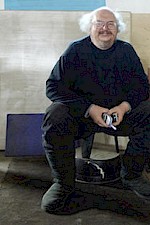Does speaker wire affect the sound?
The wire connection between an amplifier and a speaker has been the subject of a great deal of discussion – and the expenditure of a great deal of money – for more than 30 years. Yet, the question remains in many minds; does it really make a difference?
The answer is YES! And this has been repeatedly demonstrated in blind testing as well as sighted evaluation. Principally, there is one reason for this: the impedance of the wire is fixed but the impedance of the speaker varies widely with frequency. (Impedance can be thought of as the difficulty of electrical signal passing through a wire and is measured in ohms.) So, if the wire has over about 5% of the lowest impedance of the speaker, a dip in response can become audible.
There is an interaction between a speaker cable and a particular speaker. The location and depth of the dips in the frequency response depend on the speaker’s impedance and wire’s impedance. Each speaker design is different. For the wire’s impedance, thickness (gauge) of the conductor and the length of run from amp to speaker are the major concern. Counter intuitively, the higher the “gauge” of the wire, the thinner it is. So, a 24-gauge wire is half the diameter of a 12-gauge (and about one fourth the impedance). For comparison, common lamp cord, sometimes called “zip” cord, is 18 gauge.
There can be a synergy between a particular speaker and a particular speaker wire. For a while in England, there was a major discussion of how thin, single conductor, twisted pair wire sounded much “better” than the thick multi-stranded wire. Using high-end mini-monitor speakers, well controlled, volume-equalized, sighted and blind tests consistently came to that conclusion. However, it was determined that the extra resistance of the very thin wire changed the balance of the speakers in a very positive way: bass went up and treble went down. This gave all music a better foundation and non-fatiguing treble. A thick, multi-stranded wire with a resistor of the correct value now sounded the same as the thin wire. The thin wire even improved some vented systems if they were booming at the vent resonance.
Noel Lee, the founder of MonsterCable, brought the benefit of good wire to the general population. When Noel introduced the original MonsterCable – at the time he was an Ohm Sales Representative – the typical “speaker wire” was a 22-24 gauge wire with clear plastic insulation with one lead plain copper and the other tinned silver to make it easy to keep track of phase (red to copper/black to silver). His 12-gauge wire improved the sound of almost every vented system on the market – Thanks, Noel.
Today there are hundreds of special speaker wires available; some costing thousands of dollars. Which is best and which is the best value? Two interesting questions.
Based on the fact that there can be an almost “magical” synergy between speaker and wire, I really cannot tell you what is best unless I have had a chance to listen to (and test) your speakers. I can tell you that with most Ohms, 12-gauge wire (if less than 30 feet long) is what we recommend. We do our development with this wire and believe you will not hear an improvement with any other. You may hear a difference; but it is not the way we designed the speakers to sound. Of course, if there is a difference, the difference may be compensating for a room/speaker interaction problem. It is sort of like two problems canceling each other out.
Subscribe to Ohm News & Views to get the latest posts in your inbox
So, then there’s the other question of “best value.”? That’s pretty easy, if your run is less than 15 feet; standard 16- or 18-gauge lamp (zip) cord from a hardware store is fine. It’s readily available in reels and loose – and in a choice of insulation colors.
How about those other wires, interconnects? Today, you can use the interconnect cables that come with CD players, etc., or spend a virtually limitless amount of money on exotic wire and cable constructions. What is the best interconnect? There have been a lot of blind and sighted tests and they often produce very different results – even with the same testers.
In sighted tests, some people heard distinct differences; but when they test blind, they do not consistently recognize any difference. Usually the cause of confusion is blamed on the testing system (it hides the difference) or the anxiety of being “right” makes causes too much tension. I believe these differences are so small they are not worth worrying about or spending big bucks to make changes.
One thing I do recommend is to always use interconnects with gold plated contacts. In the hundreds of systems that I have done trouble shooting, corroded interconnect contacts have been the biggest source of problems. Throw away those cheap cables that come with most CD and DVD players and replace them with ones having gold contacts and good strain relief systems at the connectors.
Of course, it’s always worth putting your money where you’ll most easily be able to hear the improvement: in most situations the interaction between your room and your speakers will make a bigger difference than switching to another type of wire. Before running out to the store, try moving your speakers in your room. A difference of as little as six inches could make a world of difference!
Enjoy!
John
John Strohbeen Author
John Strohbeen was the President and Chief Engineer of Ohm Acoustics from 1978-2023.


